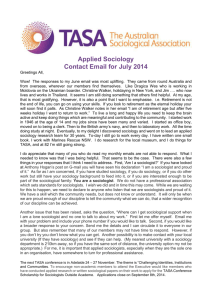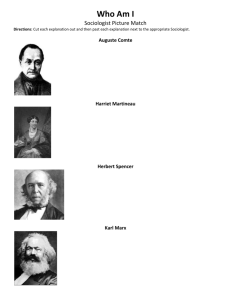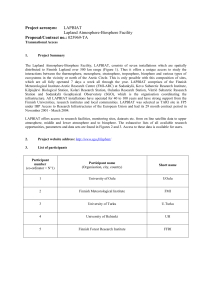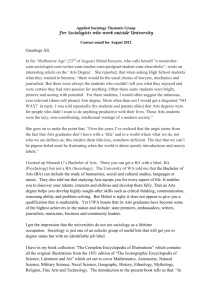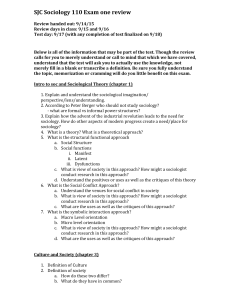Infantry Company as Society
advertisement
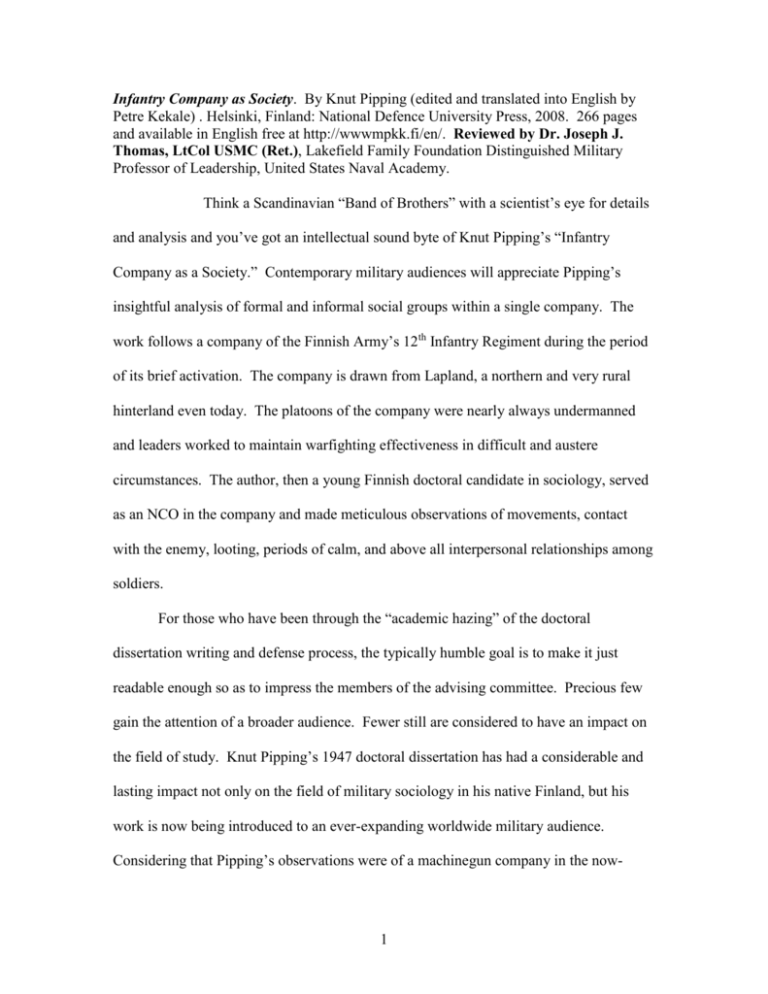
Infantry Company as Society. By Knut Pipping (edited and translated into English by Petre Kekale) . Helsinki, Finland: National Defence University Press, 2008. 266 pages and available in English free at http://wwwmpkk.fi/en/. Reviewed by Dr. Joseph J. Thomas, LtCol USMC (Ret.), Lakefield Family Foundation Distinguished Military Professor of Leadership, United States Naval Academy. Think a Scandinavian “Band of Brothers” with a scientist’s eye for details and analysis and you’ve got an intellectual sound byte of Knut Pipping’s “Infantry Company as a Society.” Contemporary military audiences will appreciate Pipping’s insightful analysis of formal and informal social groups within a single company. The work follows a company of the Finnish Army’s 12th Infantry Regiment during the period of its brief activation. The company is drawn from Lapland, a northern and very rural hinterland even today. The platoons of the company were nearly always undermanned and leaders worked to maintain warfighting effectiveness in difficult and austere circumstances. The author, then a young Finnish doctoral candidate in sociology, served as an NCO in the company and made meticulous observations of movements, contact with the enemy, looting, periods of calm, and above all interpersonal relationships among soldiers. For those who have been through the “academic hazing” of the doctoral dissertation writing and defense process, the typically humble goal is to make it just readable enough so as to impress the members of the advising committee. Precious few gain the attention of a broader audience. Fewer still are considered to have an impact on the field of study. Knut Pipping’s 1947 doctoral dissertation has had a considerable and lasting impact not only on the field of military sociology in his native Finland, but his work is now being introduced to an ever-expanding worldwide military audience. Considering that Pipping’s observations were of a machinegun company in the now- 1 obscure War of Continuation against the Soviet Union from 1941-1944, makes the growing fan base for this brief and eminently readable work that much more impressive. “Infantry Company as a Society” fills a considerable gap in the sociology of the wars of the 20th Century and makes an overdue contribution to military sociology, history, and small unit leadership. The works of more famous sociologists such as Durkheim, Stouffer, Huntington, Coates, Janowitz, and Moskos primarily target a somewhat narrow academic audience. Conversely, the popular novels of historians such as Stephen Ambrose target military practitioners and simple enthusiasts alike. Pipping brings the two approaches together in a thoroughly readable way. That readability will appeal equally to students of sociology and fans of entertaining military literature—but its greatest appeal will be to those currently facing the challenge of commanding in combat. Certainly, the Finnish Army of the 1940s was far more homogenous than today’s US military. The dilemmas contained in “Infantry Company as a Society” are far less complex, for Pipping and his mates were defending their home soil using very basic, conventional tactics. Those looking for direct lessons for small unit leaders in the exceedingly complex current operating environment of insurgency, non-state actors, information operations, complete with civilizational/political challenges will be disappointed. The book speaks to soldiers and was written by a soldier. Simplicity and clarity add to its appeal. The fact that Pipping was also a sociologist gives his work depth and rigor and, as such, it serves alternately as a text book, diary, and novel. In all of its forms it serves to educate as well as entertain. 2 The Finnish team that translated the work into English was made up of career military officers, a psychiatrist, military sociologist, and military historian. Each lent his expertise to ensure the accuracy of terms and concepts. While the original Swedish and Finnish versions have long been out of print, the English version has recently been made mandatory reading for Finnish cadets and serves as a principal text in required military sociology courses. That “Infantry Company as a Society” is strikingly similar to a wildly popular Finnish historical novel and movie makes the book’s allure in its native country all the more complete. Ultimately, the American audience will be drawn in by Pipping’s deep insights into small unit functioning. He effectively avoids overly-technical descriptions of group dynamics, so common among contemporary military sociologists and organizational psychologists. In this way, Pipping is writing to the military audience at large, rather than fellow social or behavioral scientists. Anyone who has led units at the platoon, company, or battalion levels will recognize the social patterns that emerge quite naturally. Understanding sub-communities within military organizations lends critical insight into influences on climate, morale, ethics, and mission effectiveness. In many ways, organizations are driven by informal leaders exercising unsanctioned authority to the detriment or benefit of that unit’s formal leadership team. Understanding and influencing that dynamic can spell the difference in the success of that unit. For this reason alone, today’s officers should add “Infantry Company as a Society” to their professional libraries. Doing so may not qualify the reader as an amateur military sociologist, but it certainly will make for a more effective and insightful leader. 3


